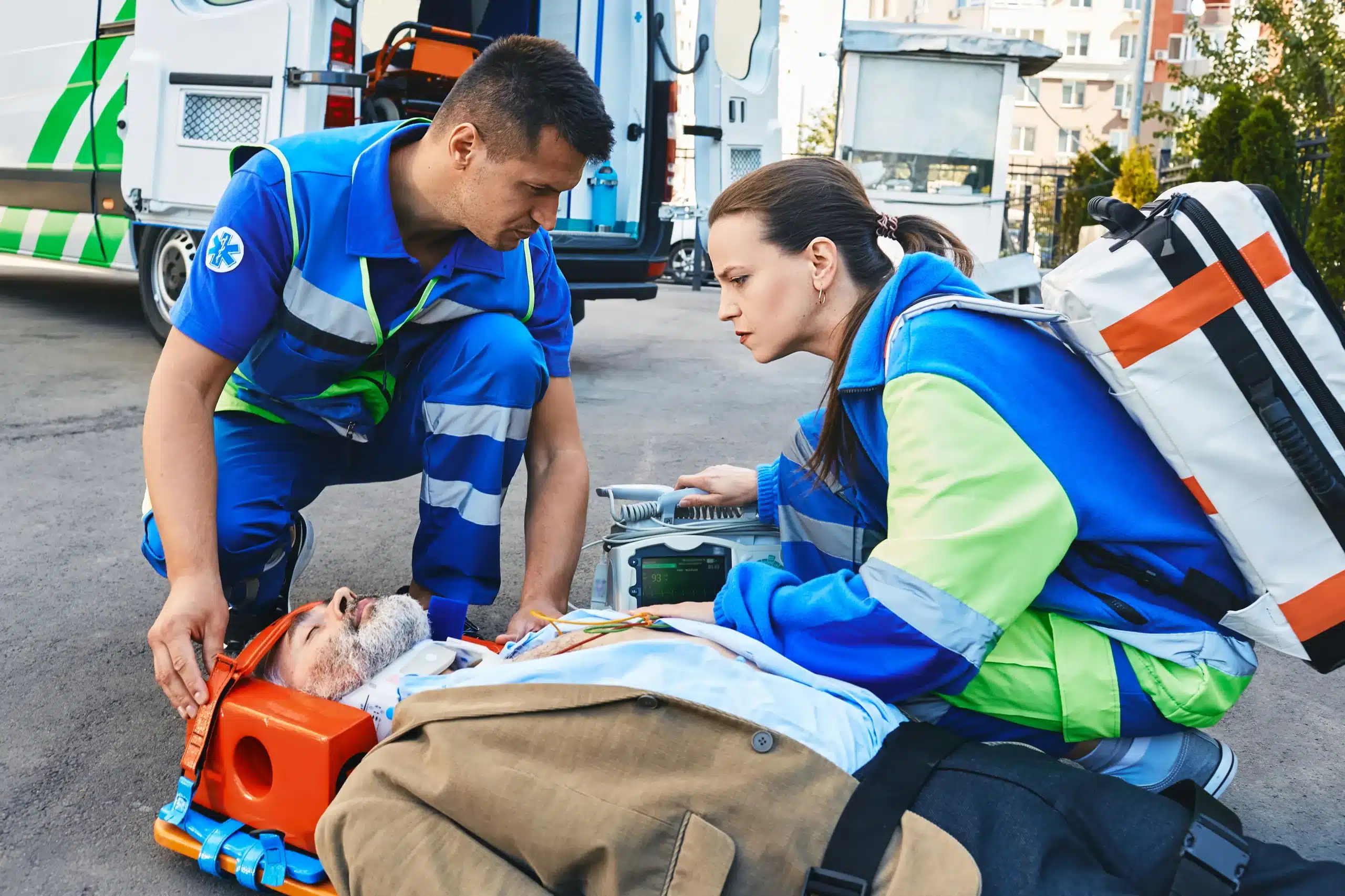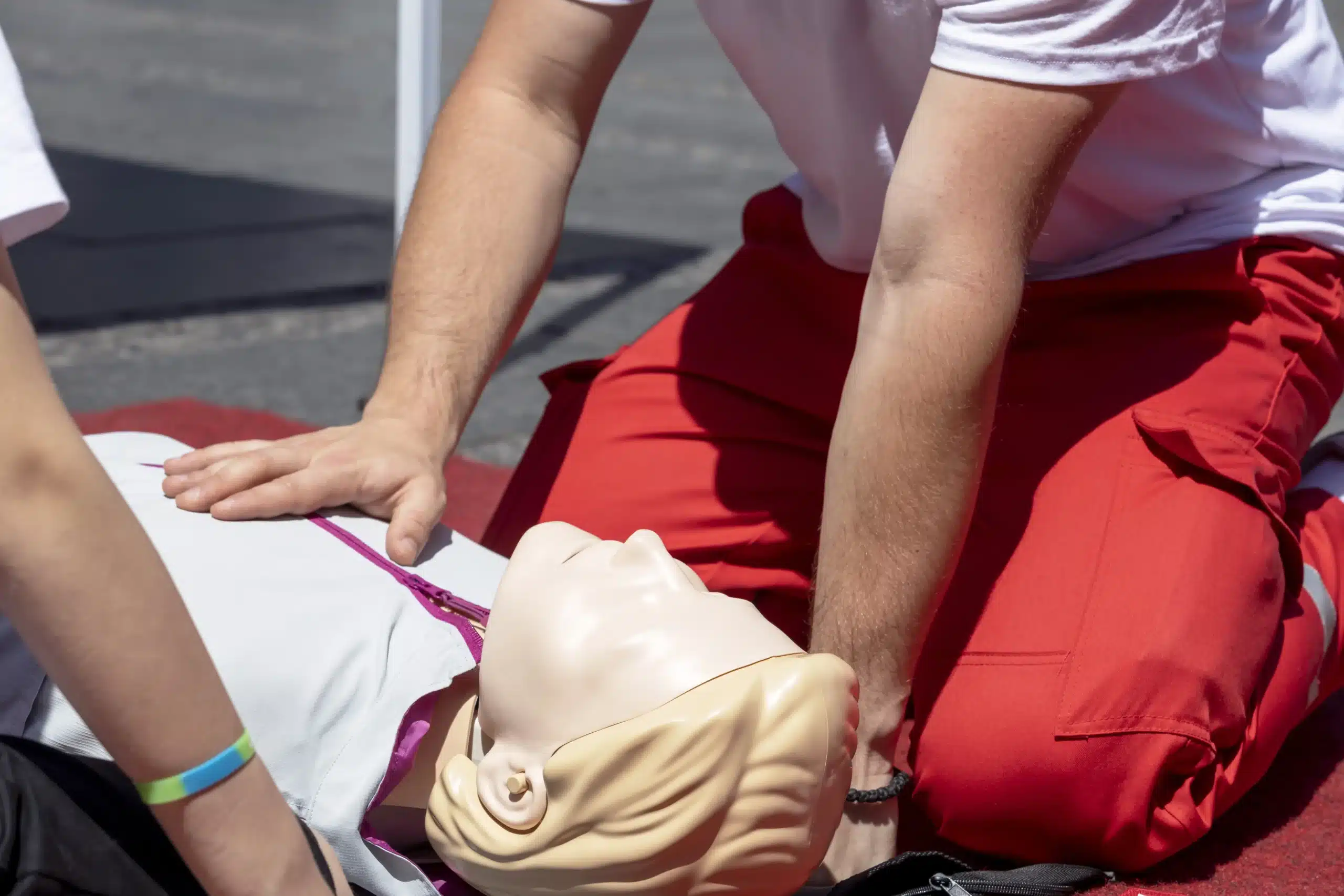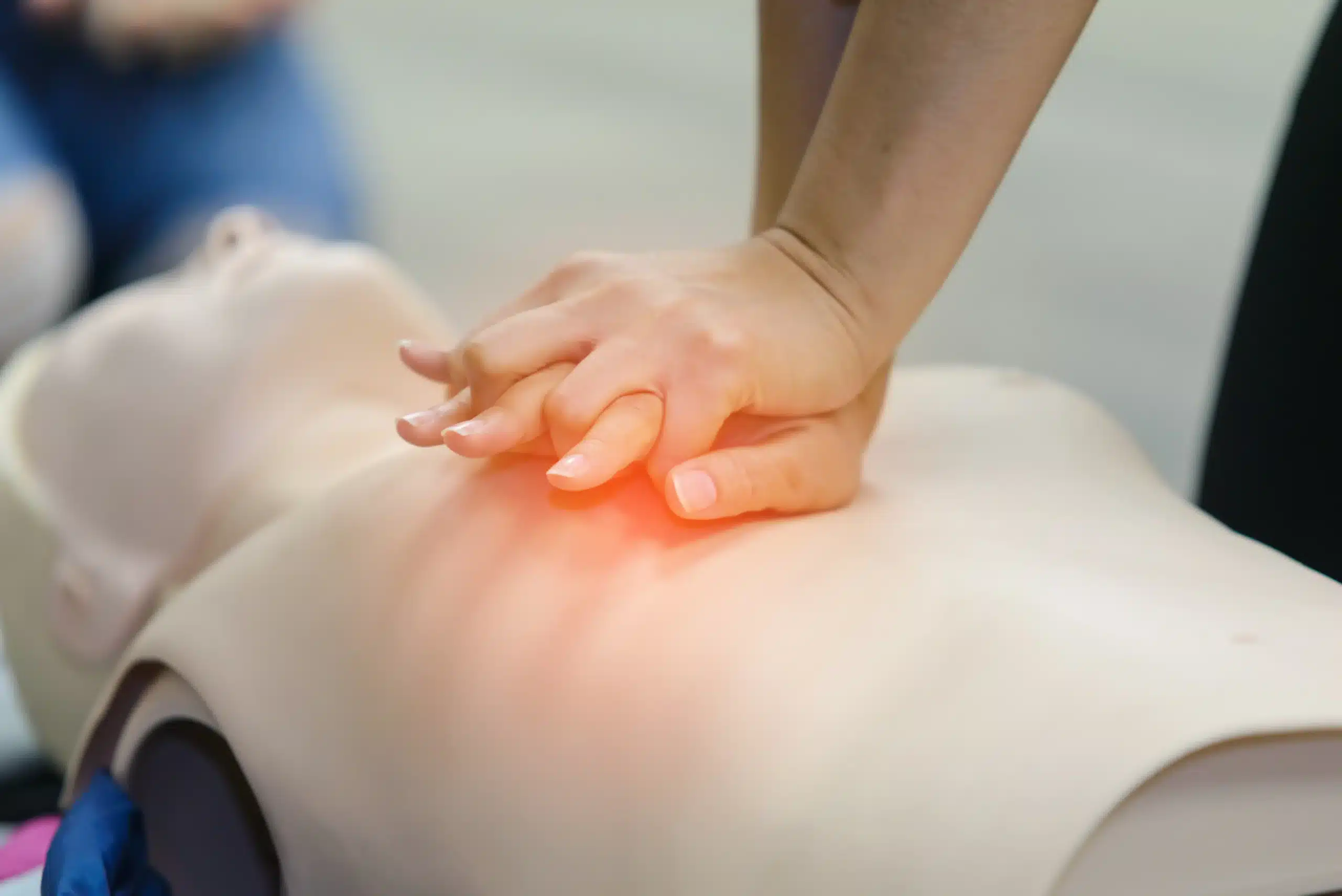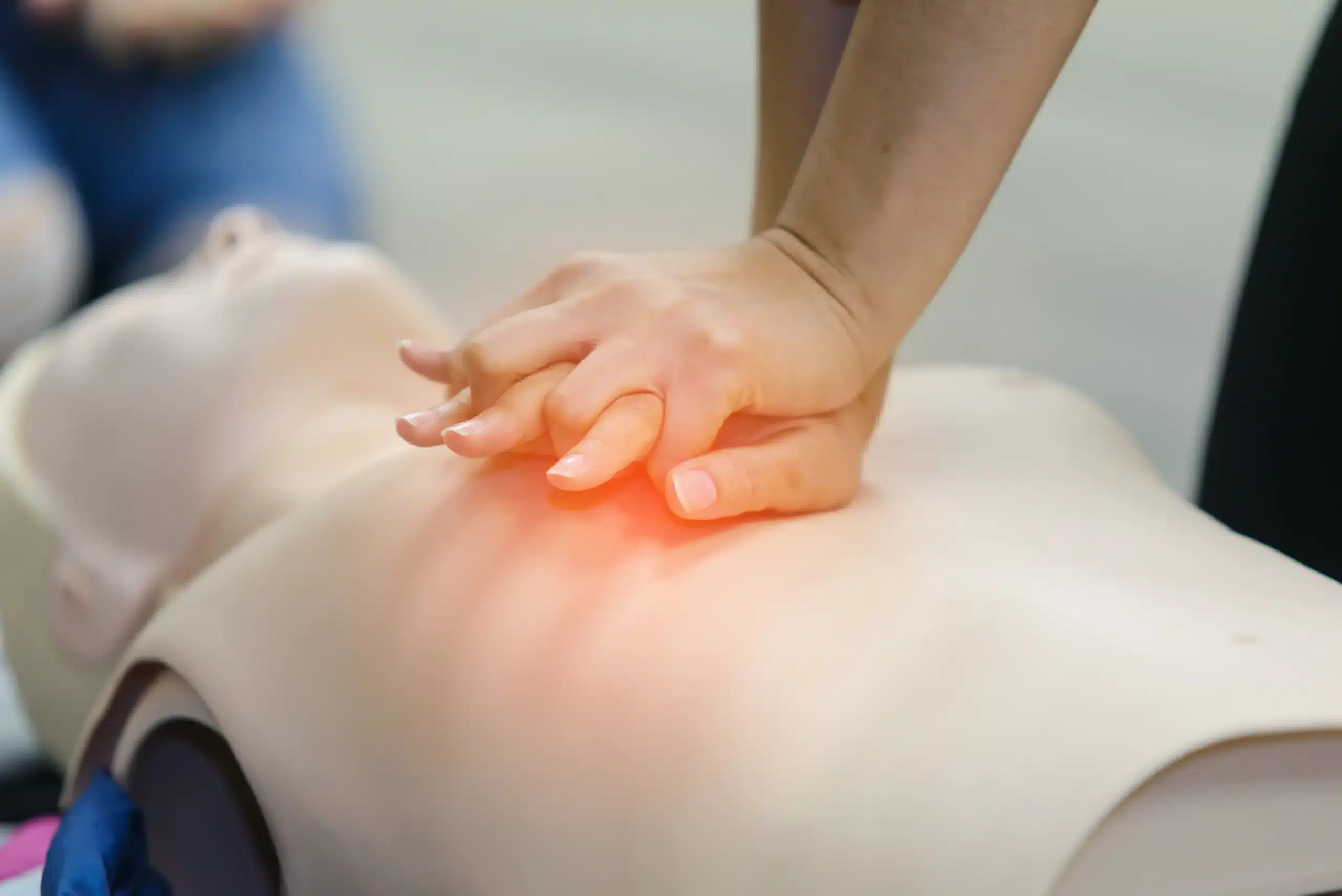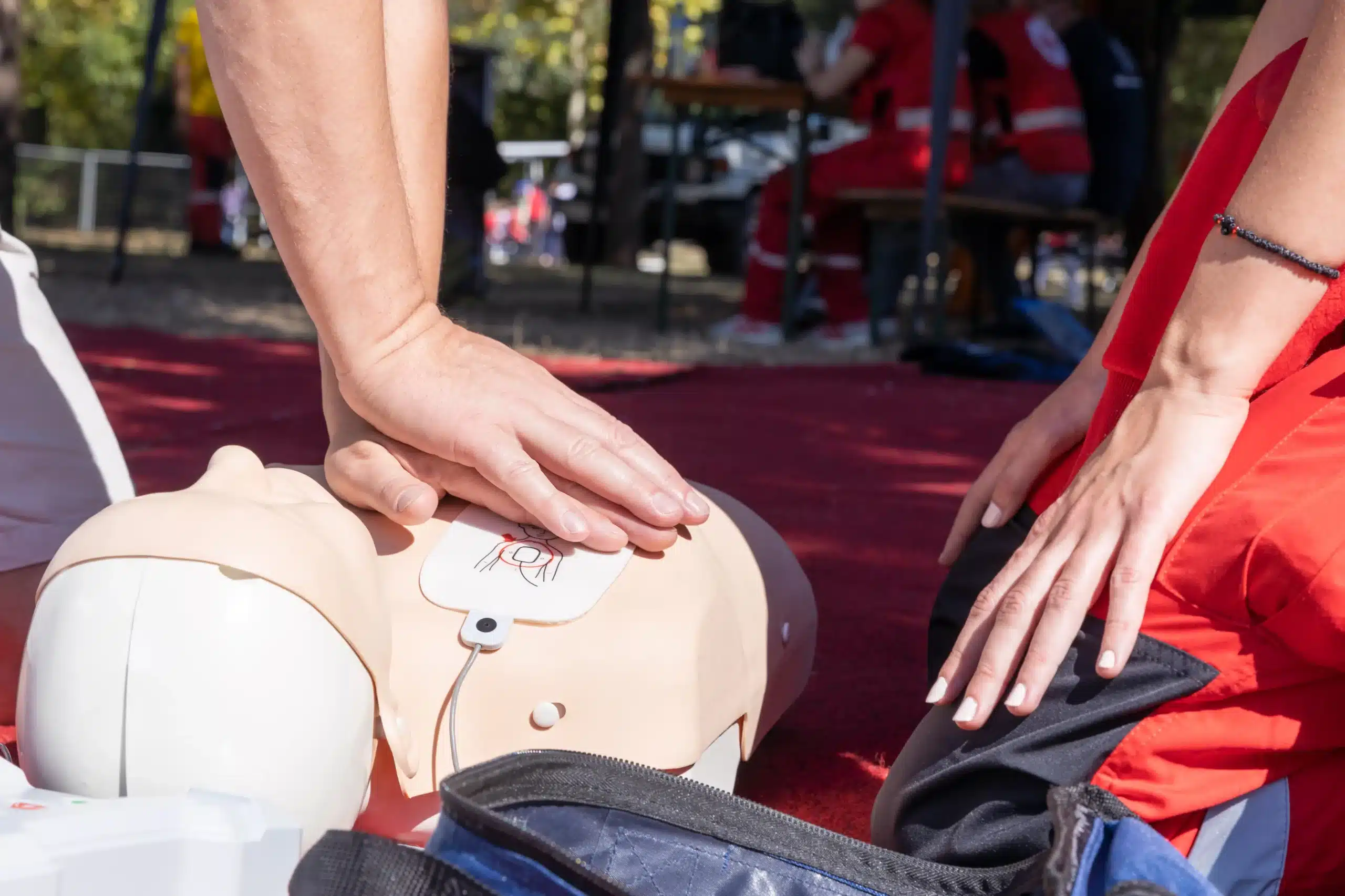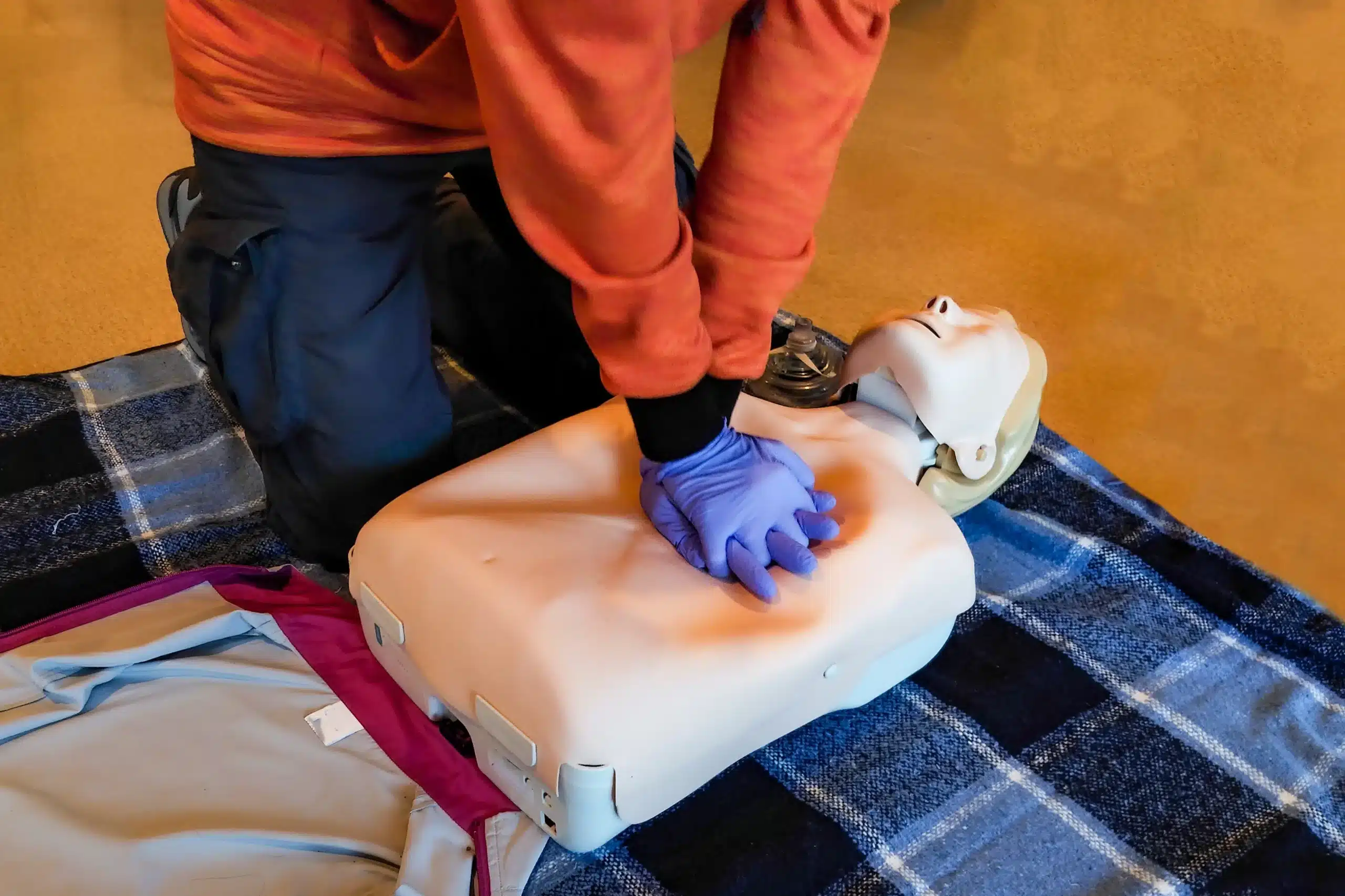Juggling work, family, and everything in between? Finding time for essential training like CPR can feel impossible. But what if you could learn these life-saving skills from the comfort of your Menlo Park home, at your own pace? Online CPR classes in Menlo Park offer a flexible and convenient way to become certified, fitting seamlessly into your busy lifestyle. In this guide, we’ll explore the world of online CPR training, covering everything from course content and certification options to addressing common misconceptions. Whether you’re a busy professional, a stay-at-home parent, or simply someone looking for a convenient way to learn CPR, this guide will help you find the perfect online CPR classes in Menlo Park for your needs.
Key Takeaways
- Online CPR training offers schedule flexibility, but in-person classes provide crucial hands-on skills practice: Balance the convenience of online learning with the benefits of instructor feedback and real-time practice using mannequins.
- Confirm certification validity and acceptance: Before committing to an online course, verify its legitimacy and ensure it meets your workplace or regulatory requirements, particularly concerning OSHA compliance and hands-on skill assessment.
- Actively engage with online resources for effective learning: Create a focused learning environment, utilize interactive elements, and practice CPR techniques regularly to maximize knowledge retention and build confidence.
What are Online CPR Classes in Menlo Park?
Online CPR classes offer a convenient way to learn life-saving skills from the comfort of your home, or anywhere with an internet connection. This digital approach allows you to study and practice at your own pace, making it a popular choice for busy professionals, parents, and anyone looking for flexible learning options. But what exactly do these courses entail, and are they the right fit for you? Let’s take a closer look.
What are Online CPR Classes?
Online CPR classes deliver the same core curriculum as traditional in-person classes, covering essential techniques like chest compressions, rescue breaths, and how to recognize the signs of a cardiac arrest. These courses often use a combination of videos, interactive exercises, and downloadable resources to teach these skills. This format allows students to review materials as needed and progress through the modules at their own speed. This accessibility makes online learning a great option for those juggling work, family, or other commitments. For a comprehensive overview of CPR training, visit our page on CPR classes. We cover everything from basic techniques to more advanced life support training.
Benefits and Drawbacks of Online CPR Training
One of the biggest advantages of online CPR training is its flexibility. You can study whenever and wherever it suits you, fitting the training around your existing schedule. This self-paced learning can be particularly helpful for visual learners who like to review materials multiple times. Online courses also tend to be more affordable than traditional classroom settings. However, it’s important to consider that online training typically doesn’t offer the same level of hands-on practice with a manikin. While some programs may incorporate virtual simulations, they don’t fully replicate the experience of physical practice. For a more hands-on learning experience, consider our in-person CPR classes where you’ll receive direct feedback from certified instructors.
Available Online CPR Certifications
Several organizations offer nationally recognized online CPR certifications. CPR Test Center, for example, provides online CPR/AED/First Aid and BLS (Basic Life Support) certification courses. Their certification is valid for two years. It’s always a good idea to research different providers and choose a program that aligns with your specific needs and learning style. We also offer a range of American Heart Association certifications through the RQI program, designed to equip you with the latest life-saving techniques. You can explore these options in more detail on our website.
Top Online CPR Class Providers in Menlo Park
Finding the right online CPR class can feel overwhelming with so many options. To help you out, I’ve put together a quick overview of some popular choices for online CPR certification in Menlo Park. Remember to always verify program details and ensure the certification meets your specific requirements.
Safety Training Seminars
Safety Training Seminars prioritizes accessible CPR training. They offer a variety of courses, including American Heart Association BLS certification, and serve Palo Alto, Redwood City, and Menlo Park. For those who prefer in-person training or have a group, they offer discount group classes as well.
In-Home CPR
In-Home CPR brings the training to you, offering CPR, First Aid, and BLS certification classes in Menlo Park and surrounding areas. This personalized approach is a great option for group training or if you prefer a more tailored learning experience at your home or business.
CPR Test Center
CPR Test Center focuses on affordability and convenience. Their online CPR/AED/First Aid and BLS certification courses are free to study—you only pay for the certification itself. This is a good option for independent learners seeking a cost-effective path to certification. The self-paced format lets you learn on your own schedule.
American Red Cross
The American Red Cross offers several learning formats, including online, in-person, and blended learning for their CPR/AED training and certification. This blended approach combines online learning with in-person skills sessions. The Red Cross is a well-known organization, and their certification is widely accepted.
American Heart Association
The American Heart Association is another reputable organization offering CPR certification. While they don’t directly offer online-only courses, it’s helpful to understand their guidelines and compare them to online options. This comparison of in-person vs. online CPR certification highlights the benefits of each, so you can choose what works best for you.
Online CPR Class Formats and Costs
Understanding the different formats and associated costs of online CPR classes helps you choose the best fit for your needs and budget. Let’s break down the common options available in Menlo Park.
Fully Online Courses
Fully online CPR/AED/First Aid and BLS (Basic Life Support) courses offer ultimate flexibility. Providers like CPR Test Center allow you to complete the coursework at your own pace, anytime, anywhere. This format is perfect if you have a busy schedule or prefer self-directed learning. While the coursework itself may be free, certification typically costs between $25 and $35, depending on the specific course. Keep in mind that fully online courses may not meet all workplace requirements, so check with your employer or regulatory body.
Blended Learning Options
For those who value hands-on learning alongside online instruction, blended learning CPR classes offer a practical approach. These courses combine online modules with in-person skills sessions. You can study the theoretical aspects online through platforms like the American Red Cross, then attend a short in-person session to practice your skills with an instructor. Providers like In Home CPR offer this blended format, ensuring you grasp both the knowledge and practical application of CPR techniques.
Certification Costs
Certification costs vary depending on the provider and the type of CPR course. Fully online certifications typically range from $25 to $35. Blended learning courses may have different pricing structures, so it’s always best to check with the specific provider for their current rates. Remember that certification is usually valid for two years. For details on certification and renewal, check the American Red Cross website. Always confirm that the certification you receive meets any workplace or regulatory requirements.
Online vs. In-Person CPR Training
Deciding between online and in-person CPR training depends on your learning style and schedule. Both formats have their pros and cons, so let’s break down the key differences to help you choose the best fit.
Flexibility and Convenience
Online CPR training offers unparalleled flexibility. You can learn at your own pace, fitting the training around your busy schedule. This is perfect for those juggling work, family, or other commitments. You can squeeze in a module during your lunch break or late at night—whenever it works for you. In-person classes, while offering a structured learning environment, require adhering to a fixed schedule.
Hands-On Practice
One key difference between online and in-person CPR training lies in the hands-on component. In-person classes provide immediate feedback from an instructor as you practice on mannequins. This real-time guidance is invaluable for mastering proper technique. While some online courses offer videos and simulations, they can’t fully replicate the experience of physical practice.
Instructor Interaction and Feedback
In-person training allows for direct interaction with a certified instructor and fellow students. This creates an environment for asking questions, receiving personalized feedback, and learning from others’ experiences. Virtual Q&A sessions or online forums may not offer the same level of immediate support. For many, the in-person dynamic fosters a more engaging learning experience.
Certification Validity
Both online and in-person CPR certification programs, when accredited by a recognized organization like the American Heart Association, are generally accepted. It’s crucial to verify the accreditation of any program to ensure your certification meets requirements. While online courses can be more affordable, make sure the program includes a hands-on skills assessment to meet workplace standards. Our CPR classes at Safety Training Seminars offer both online and in-person options that fulfill these requirements.
Choose the Right Online CPR Class in Menlo Park
Finding the right online CPR class can feel overwhelming with so many options available. Here’s a breakdown of what to look for in a quality online CPR course in Menlo Park:
Accreditation and Recognition
First things first, make sure the certification is legitimate. Plenty of online-only CPR certifications exist, but their value can be questionable. Organizations like the American Heart Association and the American Red Cross don’t accept fully online CPR certifications because they require hands-on skills practice. If your goal is American Heart Association certification, check out our RQI program for a blended learning approach. For a deeper look into online-only certifications, this article offers helpful insights into potential scams.
Course Content
One of the best things about online CPR training is the flexibility. You can learn at your own speed and fit the training around your busy Menlo Park life. This comparison highlights the benefits of online versus classroom learning. Look for a course that covers adult, child, and infant CPR, as well as AED use and choking relief. A good online course will also offer resources like videos, interactive quizzes, and downloadable materials.
Certification and Renewal
Remember that CPR certification is typically valid for two years and needs to meet OSHA requirements. While in-person or blended learning courses usually satisfy these requirements, online-only courses might not provide proper OSHA certification. The American Red Cross website offers more information on online CPR class procedures. Before you sign up, double-check that the course offers a valid certification accepted in your workplace.
Reviews and Testimonials
Reading reviews from other students can give you a good sense of an online CPR class’s effectiveness and convenience. Many people appreciate the speed and ease of online recertification, especially the ability to learn at their own pace. Check out local reviews for CPR classes in Menlo Park to see what others are saying. If you’re looking for in-person training with the convenience of online scheduling, consider our CPR classes in Palo Alto, which also serves Menlo Park residents. We offer low prices and group discounts.
Maximize Your Online CPR Learning
Getting the most out of your online CPR training involves more than just passively watching videos. It requires active participation and creating a learning experience that works for you. Here’s how to approach online CPR training to maximize your learning:
Create a Learning Environment
Online CPR training offers incredible flexibility. You can learn at your own pace and on your own schedule. Take advantage of this by creating a dedicated learning space free from distractions. Find a quiet spot in your home, put your phone on silent, and let your family or roommates know you need some uninterrupted time. This will help you focus and absorb the information more effectively. Think about what helps you learn best. Do you prefer working at a desk, or curled up on the couch? Set yourself up for success by creating a comfortable and focused learning environment. Just like in a traditional classroom, a dedicated learning space can make a world of difference.
Use Interactive Elements and Resources
Many online CPR courses incorporate interactive elements like quizzes, simulations, and videos demonstrating real-life scenarios. Actively engage with these resources. Don’t just click through—take the time to answer questions thoughtfully and reflect on the scenarios presented. These interactive elements enhance the learning experience and help solidify the concepts. Think of them as opportunities to apply what you’re learning and test your understanding.
Practice Skills at Home
One of the biggest advantages of online CPR training is the ability to practice skills at home. While online courses can’t fully replace hands-on practice with an instructor, you can still reinforce what you’ve learned by practicing the techniques on a pillow or mannequin. Repetition is key to mastering CPR skills, so take advantage of the flexibility of online learning to practice regularly.
Access Support and Forums
Many online CPR courses offer access to student forums or instructor support. Don’t hesitate to use these resources if you have questions or need clarification on any of the material. Connecting with other students in online forums can also be a great way to share tips and learn from each other’s experiences. If your course offers instructor support, take advantage of it! Instructors can provide personalized feedback and answer any specific questions.
Address Online CPR Class Misconceptions
Let’s clear up some common misunderstandings about online CPR classes. It’s important to understand the limitations and recognize what truly prepares you for a real-life emergency.
Online Certification Legitimacy
While you’ll find plenty of 100% online CPR certifications, their legitimacy is often questionable. Organizations like the American Heart Association and the American Red Cross don’t accept fully online CPR certifications. They require hands-on training to ensure you’re truly prepared to respond effectively in an emergency. This practical component is essential for developing the muscle memory and confidence needed to perform CPR correctly under pressure.
Employer Acceptance and OSHA Compliance
CPR certification generally lasts two years and can fulfill OSHA (Occupational Safety and Health Administration) requirements. However, online-only courses do not provide OSHA-compliant certification. Many employers prefer certifications that include hands-on training, ensuring their employees are fully equipped to handle real-life emergencies. Check with your employer to confirm their specific requirements for CPR certification. For those in and around Palo Alto, Safety Training Seminars offers convenient in-person training.
Hands-On Skills Development
CPR is a physical skill. Think of it like learning to ride a bike—you can read about it all day, but you won’t truly learn until you get on and try. CPR requires practice with manikins and feedback from a qualified instructor. Online-only learning can’t replicate this crucial hands-on experience. This lack of practical training can create a gap in your confidence and competence when performing CPR in a real emergency.
Stay Current with CPR Guidelines
CPR guidelines can change based on the latest research and best practices. Staying up-to-date is crucial for providing effective care. The American Red Cross offers various learning options, including blended learning that combines online learning with in-person skills sessions. This approach ensures you’re learning the most current techniques and recommendations. Choosing a course that includes both online and hands-on components is the best way to stay current and confident in your CPR abilities. Consider exploring options like the RQI program for maintaining your certification.
Related Articles
- CPR Training in Menlo Park: Your Complete Guide – Palo Alto CPR Classes
- CPR Renewal in Menlo Park: Your Guide – Palo Alto CPR Classes
- Online ACLS Classes Menlo Park: Your Guide – Palo Alto CPR Classes
- Online BLS Classes in Palo Alto: Your Guide – Palo Alto CPR Classes
- Palo Alto CPR Classes: Your Complete Guide – Palo Alto CPR Classes
Frequently Asked Questions
Are online CPR certifications accepted everywhere?
Not all online CPR certifications are universally accepted. While convenient, some organizations and employers prefer or require certifications that include a hands-on skills component. It’s always best to check with your employer or the organization requiring certification to ensure the online course you’re considering meets their specific standards. Look for programs accredited by reputable organizations like the American Heart Association or the American Red Cross.
What if I learn best through hands-on training?
If you’re someone who thrives in a hands-on learning environment, consider blended learning CPR classes. These courses combine the flexibility of online learning with in-person skills sessions, allowing you to study the theory at your own pace and then practice your skills with a certified instructor. This approach offers the best of both worlds, providing the convenience of online learning with the essential practical experience.
How much do online CPR classes typically cost?
The cost of online CPR classes varies depending on the provider and the type of course. Fully online certifications generally range from $25 to $35. Blended learning courses, which include in-person skills sessions, may have different pricing structures. Always check with the specific provider for their current rates.
How long is CPR certification valid, and how do I renew it?
CPR certification is typically valid for two years. Renewal processes vary depending on the certifying organization. Some organizations offer online renewal courses, while others require in-person training. Check with your certifying organization for their specific renewal requirements and procedures.
What’s the best way to choose an online CPR class that’s right for me?
Consider your learning style, schedule, and specific requirements when choosing an online CPR class. Look for a program that’s accredited by a reputable organization and covers the essential CPR techniques for adults, children, and infants. Read reviews from other students, compare pricing and course content, and ensure the certification meets any workplace or regulatory requirements you may have.

